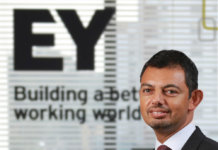Every year multiple reports are issued on single and multi-family offices around the world.
Here is a compilation of the most striking facts and figures about family offices:
There are at least 3,000 single family offices in existence globally and at least half of these were set up in the last 15 years. (Source: EY Family Office Guide)
The average costs for a single family office are about 0.6% of assets under management.
The #1 surveyed objective of family office was Intergenerational wealth management, followed by accounting, tax and estate planning.
The largest Multi-Family Office in the world by number of multi-generational families is Bessemer Trust in New York, which manages assets for over 2,200 families.
U.S. Family Offices manages an average of $400 million in total client financial assets each.
In the U.S., a full-service family office will cost a minimum of US$1m annually to run, with 60% of the total costs of a family office allocated to staff compensation and benefits. (Source: EY Family Office Guide)
The #1 philanthropic donations by family offices was to causes for ‘children & youth’, followed by ‘education’.
Globally, family offices allocate 47% of their total budget to investment activities.
Tharawat Magazine, Issue 30, 2016














